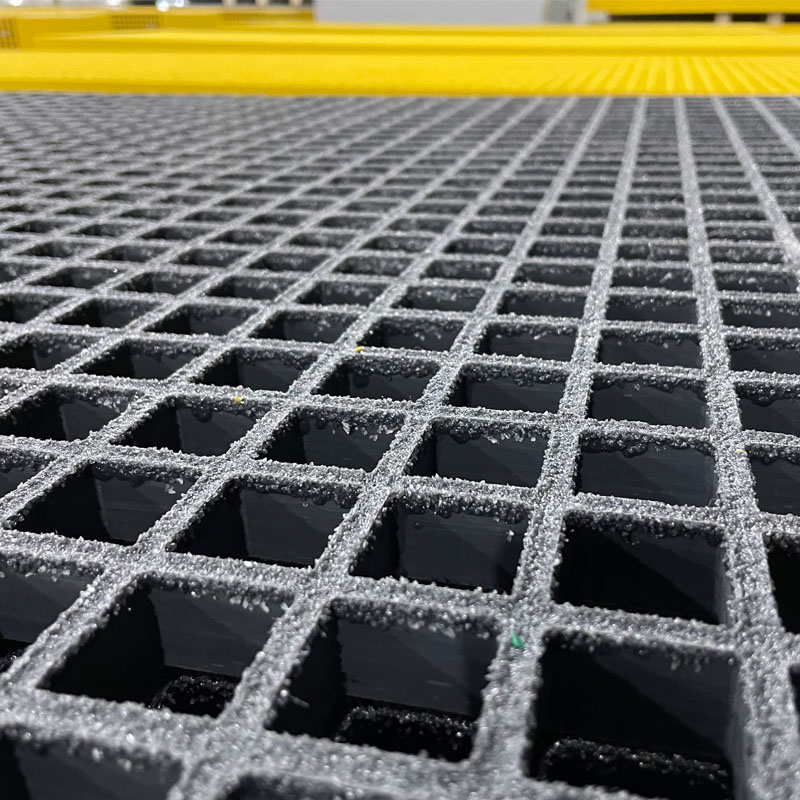loading...
- No. 9, Xingyuan South Street, Dongwaihuan Road, Zaoqiang County, Hengshui, Hebei, China
- admin@zjcomposites.com
- +86 15097380338
- Welcome to visit our website!
Advancements in Fiber Reinforced Polymer Rebar for Enhanced Structural Performance and Durability
Fiber Reinforced Polymer Rebar A Revolutionary Advancement in Construction
In the quest for advanced materials that enhance structural integrity and longevity, Fiber Reinforced Polymer (FRP) rebar has emerged as a groundbreaking solution in the construction industry. Unlike traditional steel rebar, FRP rebar offers a plethora of advantages that are transforming the way concrete structures are designed and built.
Understanding FRP Rebar
Fiber Reinforced Polymer rebar is composed of a polymer matrix reinforced with fibers, typically made from glass, carbon, or aramid. This combination creates a material that is not only lightweight but also possesses remarkable strength-to-weight ratios. The production process of FRP rebar involves pultrusion, where the fibers are impregnated with resin and then drawn through a heated die to cure. The result is a continuous, high-performance reinforcement bar that can be manufactured in various shapes and sizes to meet specific engineering requirements.
Benefits Over Traditional Steel Rebar
One of the most significant advantages of using FRP rebar is its corrosion resistance. Traditional steel rebar is prone to rust and degradation when exposed to moisture, chemicals, and salt, which can severely compromise the integrity of concrete structures over time. On the other hand, FRP rebar is inherently resistant to corrosive environments, making it an ideal choice for projects in coastal areas, bridges, and structures exposed to harsh chemicals.
Additionally, FRP rebar is significantly lighter than steel, making it easier to handle, transport, and install. This reduction in weight can lead to lower shipping costs and faster construction times, as fewer workers are needed for handling heavy materials. Furthermore, the non-magnetic properties of FRP rebar make it an excellent choice for applications in electromagnetic sensitive areas, such as hospitals or laboratories.
Enhanced Performance
fiber reinforced polymer rebar

The performance characteristics of FRP rebar extend beyond its physical properties. It exhibits excellent tensile strength, which is essential for the reinforcement of concrete structures. Its elastic modulus is lower than that of steel, which allows for better compatibility with the deformability of concrete under load. This compatibility reduces the risk of cracking in concrete, ultimately leading to enhanced durability and a longer service life for structures.
Moreover, the thermal expansion coefficient of FRP rebar is much lower than that of steel, which means it experiences minimal thermal expansion and contraction. This property is beneficial in maintaining the dimensional integrity of structures subjected to temperature fluctuations.
Applications and Future Prospects
The application of FRP rebar spans a wide range of projects, including highway bridges, marine structures, parking garages, and even residential buildings. Its unique properties make it suitable for both new constructions and repairs in existing structures. The growing awareness of sustainable construction practices has also contributed to the increased adoption of FRP rebar, as it often leads to reduced maintenance and replacement costs over time.
As research and development continue to enhance the performance and efficiency of FRP materials, the future of FRP rebar looks promising. Innovations in fiber technology and resin formulations are likely to yield even lighter, stronger, and more sustainable options, expanding its applicability in more demanding construction scenarios.
Conclusion
In conclusion, Fiber Reinforced Polymer rebar represents a significant advancement in construction technology. With its superior corrosion resistance, lightweight nature, and exceptional strength, FRP rebar offers a viable alternative to traditional steel rebar. As the construction industry seeks to address challenges related to durability, sustainability, and efficiency, FRP rebar stands out as a key player in the evolution of modern construction practices. Its growing adoption is a testament to the industry's commitment to innovation and quality, promising a brighter future for infrastructure development.
-
GRP Structures: The Future of Lightweight, High-Performance EngineeringNewsJun.20,2025
-
FRP Water Tank: High-Performance Storage for Corrosive and Clean Water SystemsNewsJun.20,2025
-
FRP Square Tube: The New Industry Standard for Chemical and Structural ApplicationsNewsJun.20,2025
-
FRP Pultruded Profiles: The Ultimate Choice for Lightweight Structural StrengthNewsJun.20,2025
-
FRP Handrails: The Safer, Smarter, and Stronger Choice for Modern InfrastructureNewsJun.20,2025
-
FRP Grating: The Smart Solution for Durable, Lightweight Industrial FlooringNewsJun.20,2025
-
Why Choose a Galvanized Water Tank for Your Storage NeedsNewsMay.21,2025
